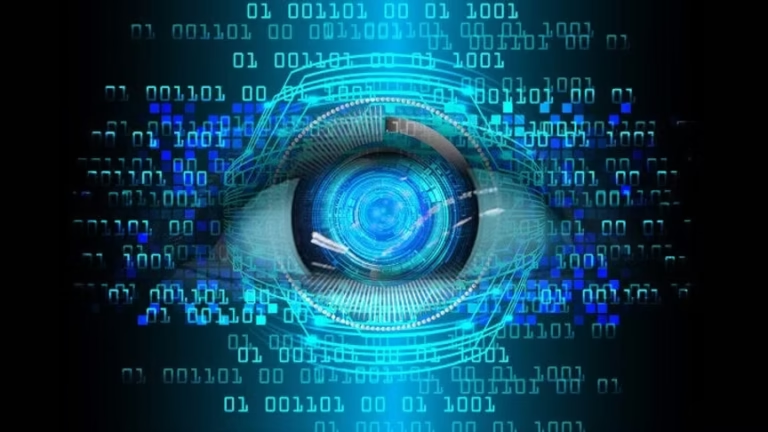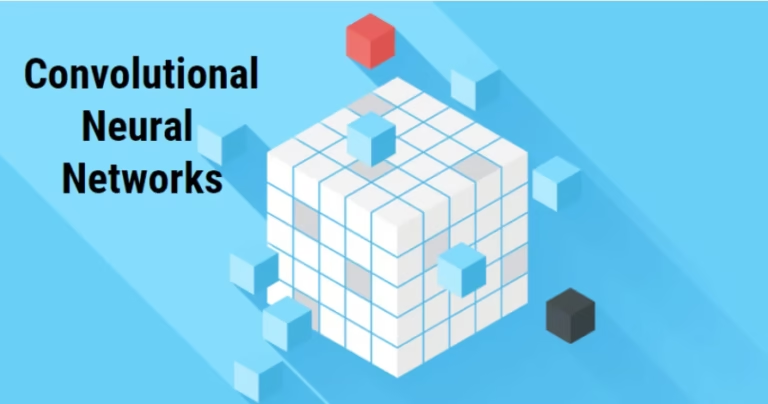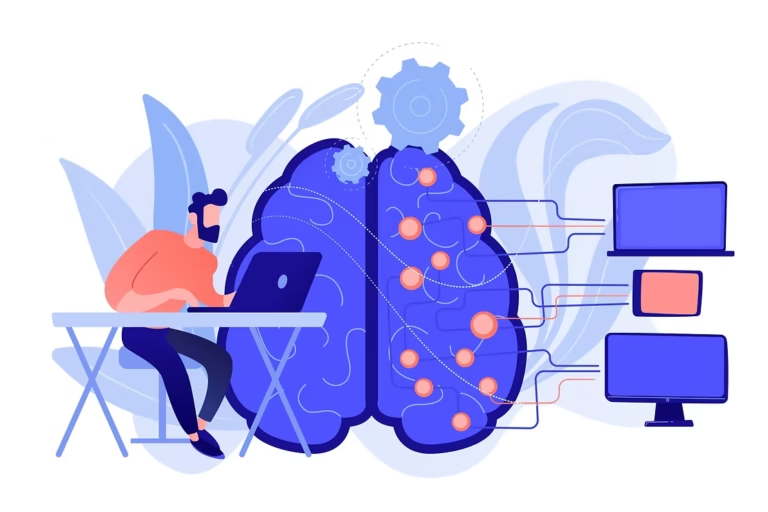Computer vision, a key domain within artificial intelligence (AI), empowers machines to analyze and understand visual information from the world. From self-driving cars to facial recognition in smartphones, it plays an integral role in modern technology. With the computer vision market expected to grow to $17.4 billion by 2027, top tech companies are heavily investing in this field to develop smarter and more efficient systems. As demand for computer vision engineers continues to rise, mastering the essential topics and techniques is crucial for landing a role in top companies like Google, Meta, Microsoft, Apple, and Tesla—this blog serves as your go-to computer vision interviews guide.
This blog covers the essential topics, current job opportunities, advanced interview questions, and preparation tips to succeed in computer vision interviews. Whether you're just starting or looking to sharpen your skills, this comprehensive guide will help you navigate the competitive interview process.
1. Companies Hiring for Computer Vision Roles
As computer vision applications become ubiquitous across industries, numerous companies are expanding their AI and machine learning teams. Here’s an in-depth look at companies hiring for computer vision roles, the types of job descriptions you’ll encounter, and current hiring trends:
Google: At the forefront of AI, Google uses computer vision in products like Google Photos, Lens, and autonomous driving initiatives like Waymo. A typical job posting might be for a Computer Vision Research Scientist, focusing on deep learning-based vision systems. Key responsibilities could include developing CNNs and generative models for tasks such as image segmentation or object recognition. Google currently lists over 150 openings for roles related to computer vision, spanning product development and research positions.
Meta (Facebook): With its focus on AR/VR through Oculus and Meta's metaverse, the company is heavily invested in computer vision. A Computer Vision Engineer role at Meta may involve developing real-time vision systems for AR applications, 3D object detection, and scene understanding using technologies like SLAM (Simultaneous Localization and Mapping). Meta’s current job listings show over 120 open positions in this space.
Microsoft: On its Azure AI platform, Microsoft builds advanced computer vision APIs for enterprise clients. Their positions, such as Computer Vision Scientist, require knowledge in areas like large-scale image processing, model optimization, and deployment of vision models for intelligent cloud services. Microsoft lists over 200 roles related to computer vision, highlighting its focus on deep learning frameworks like PyTorch and TensorFlow.
Tesla: The company’s focus on autonomous driving depends heavily on robust computer vision systems. Tesla’s computer vision roles involve working on self-driving algorithms for real-time perception in changing environments, using massive datasets from their fleet of vehicles. Tesla frequently hires Computer Vision Engineers and Autopilot Engineers to enhance its autonomous systems.
Apple: Known for innovations in facial recognition (Face ID), object tracking, and AR applications, Apple has multiple open positions for Machine Learning Engineers and Computer Vision Scientists. Apple's job descriptions focus on building on-device machine learning systems for iPhone and Mac products, emphasizing low-latency and power-efficient vision models.
These companies, along with others like Amazon, OpenAI, and Nvidia, actively recruit professionals with deep expertise in computer vision. A strong portfolio showcasing real-world projects in image classification, object detection, and generative models can significantly enhance your prospects.
2. Foundational Knowledge: Computer Vision Basics
Before diving into advanced topics, it’s essential to master the fundamentals of computer vision. Interviews at top companies typically begin with questions that assess your understanding of basic image processing and feature extraction techniques.
Image Processing: This involves manipulating an image to extract useful information. Essential operations include filtering, edge detection, and noise reduction. Gaussian filtering is commonly used to reduce noise, while edge detection algorithms like the Sobel filter and Canny edge detector identify significant transitions in image intensity.Edge detection is particularly important in tasks like object localization, where the goal is to identify the boundaries of objects. For example, the Canny edge detector uses a multi-stage algorithm to detect a wide range of edges, which is a common concept in interviews.
Feature Extraction: Techniques like SIFT (Scale-Invariant Feature Transform) and HOG (Histogram of Oriented Gradients) are used to detect and describe key points in images. In a vision task, such as facial recognition, HOG descriptors are used to extract edge and texture information from images.Understanding the mathematical foundations behind these algorithms will help you articulate how and why they are applied in practical applications. SIFT is often discussed in object recognition scenarios, as it helps extract features that are invariant to scale and rotation. Similarly, HOG is frequently used in human detection systems, such as pedestrian detection in self-driving cars.
Matrix Operations in Image Processing: Many foundational algorithms rely on matrix operations like convolutions. In image processing, applying a convolution involves sliding a kernel over the image to detect specific features, such as edges. Being comfortable with matrix operations and their optimization is critical during technical interviews.
Understanding these core concepts will provide a solid foundation for discussing more advanced topics in computer vision.
3. Deep Learning in Computer Vision
Deep learning, particularly through Convolutional Neural Networks (CNNs), has transformed computer vision. Today, most companies expect candidates to have a deep understanding of how CNNs function, from basic architecture to advanced techniques for model optimization.
CNN Architecture: CNNs are designed to automatically and adaptively learn spatial hierarchies of features. The layers of a CNN include convolutional layers, where filters are applied to the input image to detect patterns; pooling layers, which reduce the dimensionality; and fully connected layers, which are used for classification tasks.CNNs are used in a variety of real-world applications, from image classification (e.g., identifying animals in photos) to object detection (e.g., detecting pedestrians in autonomous vehicles). You should understand the details of architectures like VGG, ResNet, and MobileNet, and be able to explain why certain architectures are preferred based on the task.
Backpropagation and Training: Understanding how backpropagation works in CNNs is critical. During training, the model adjusts its weights based on the loss function's gradient. Interviewers might ask you to explain how gradient descent works, how learning rates affect convergence, and how to prevent overfitting through techniques like dropout and batch normalization.When discussing backpropagation, it’s useful to reference specific challenges, such as the vanishing gradient problem in deep networks, and how architectures like ResNet solve this using skip connections.
Object Detection Models: Object detection is one of the most common applications of CNNs in interviews. Models like YOLO (You Only Look Once) and Faster R-CNN are often discussed. YOLO is valued for its speed and real-time performance, making it a popular choice in applications like autonomous driving, where rapid object detection is crucial.
Transfer Learning: Many interviewers ask about transfer learning, a technique where a model pre-trained on a large dataset (e.g., ImageNet) is fine-tuned for a specific task. This is particularly useful when dealing with small datasets, a common problem in real-world applications. Discussing how you’ve used pre-trained models in past projects can demonstrate practical expertise.
Understanding CNNs at both the architectural and operational level is crucial for computer vision interviews. Mastery of these topics will prepare you for in-depth discussions during technical rounds.
4. Data Augmentation and Preprocessing
Data augmentation plays a critical role in enhancing the performance of computer vision models, particularly when working with small or imbalanced datasets.
Techniques and Importance: Data augmentation involves creating modified versions of the original training data by applying various transformations. These transformations can include random rotations, flipping, cropping, scaling, and color jittering. Each transformation generates new images that help the model generalize better by exposing it to more varied data.For example, in an object detection task, augmenting images through random cropping and rotations can help the model learn to detect objects from different angles. Scaling and zooming can teach the model to recognize objects at different distances. These techniques are invaluable in preventing overfitting, especially in small datasets where the risk of memorizing training data is high.
Synthetic Data Generation: Another augmentation method involves generating synthetic data using GANs (Generative Adversarial Networks). GANs are used to create new images by training a generator and a discriminator. This is particularly useful in industries like healthcare, where real-world labeled datasets are scarce. For instance, GANs can generate synthetic medical images, allowing models to be trained without the need for an extensive dataset of labeled images.
In technical interviews, you may be asked to discuss specific augmentation techniques and how you’ve used them to overcome data limitations. Additionally, being able to explain the impact of preprocessing methods like normalization and standardization is key for demonstrating your understanding of data preparation.
5. Common Challenges in Computer Vision
In real-world applications, computer vision engineers encounter a variety of challenges that affect the performance of their models. Being aware of these challenges and understanding how to tackle them is crucial for acing interviews at top companies.
Occlusion: One of the most common issues in computer vision is occlusion, where parts of objects in an image are hidden or obscured. This can be particularly problematic in object detection tasks where only a portion of an object is visible, such as when one car partially blocks another in an image. To handle occlusion, engineers use robust feature descriptors and methods like multi-scale detection, which can detect objects at different sizes and positions, and contextual modeling, which leverages surrounding data to infer hidden parts of objects.
Handling Noisy and Large Datasets: Real-world datasets are often noisy or contain mislabeled data, making it difficult for models to generalize effectively. For example, datasets used in autonomous driving (e.g., the KITTI dataset) contain many frames with variable lighting conditions, motion blur, or incomplete annotations. Dealing with noisy data requires robust preprocessing techniques like data cleaning, outlier detection, and active learning, which involves iteratively refining the dataset by correcting mislabeled or ambiguous data.Additionally, large-scale datasets, like ImageNet or COCO, present computational challenges due to their size. Efficiently processing and training models on such datasets requires optimized data pipelines and parallelization. Many engineers use distributed training frameworks like Horovod and Nvidia’s NCCL to scale training across multiple GPUs.
Computational Constraints: Deep learning models, especially in computer vision, are computationally intensive. Companies may ask you to discuss how to reduce the complexity of your models while maintaining performance. Techniques such as model pruning (removing unnecessary neurons in neural networks), quantization (reducing the precision of model weights), and knowledge distillation (transferring knowledge from a large model to a smaller one) can all improve the speed and efficiency of vision models without sacrificing accuracy.
Understanding these challenges and knowing how to address them is a critical part of computer vision interviews. Interviewers often ask about real-world projects you’ve worked on and how you overcame such obstacles, so be prepared to discuss strategies you've employed in previous work.
6. Key Tools and Libraries
To succeed in computer vision interviews, it’s important to be proficient in the tools and libraries most commonly used in the field. Here’s a breakdown of the essential tools and why they’re relevant:
OpenCV: One of the most widely used libraries for computer vision, OpenCV offers tools for image processing tasks like face detection, object tracking, and edge detection. In interviews, you may be asked to use OpenCV to perform tasks such as applying filters, detecting corners, or segmenting an image. Familiarity with OpenCV’s core functionality, including feature detection methods like ORB (Oriented FAST and Rotated BRIEF), is crucial for technical rounds.
TensorFlow and PyTorch: These two deep learning frameworks dominate the computer vision space. TensorFlow, with its high-level Keras API, is popular for deploying scalable models in production. PyTorch is favored for its ease of use in research and experimentation. Understanding both frameworks is beneficial since they are frequently used in real-world computer vision tasks, such as building CNNs or implementing transfer learning for object detection models.Interviewers might ask you to compare the two frameworks or explain how you’ve used them in past projects. For instance, explaining how you built an object detection pipeline using TensorFlow’s object detection API or how you used PyTorch’s torchvision package to preprocess datasets will demonstrate your technical competence.
Dlib: Known for its robust face detection and facial landmarking capabilities, Dlib is commonly used in security and biometrics applications. In interviews, you may be asked to compare Dlib with OpenCV for tasks like real-time face detection or facial expression analysis.
Nvidia CUDA and cuDNN: For high-performance training of deep learning models, particularly on GPUs, familiarity with Nvidia’s CUDA framework and cuDNN library can be critical. These tools are essential for optimizing models to run faster and are often discussed when interviewers ask how you’ve handled computational bottlenecks.
Mastery of these libraries and frameworks will make you more competitive in computer vision interviews, as practical coding tests often involve implementing tasks using these tools.
7. Interview Tips for Computer Vision Roles
Succeeding in a computer vision interview requires a balance of technical skills, problem-solving abilities, and effective communication. Here are some key tips to prepare:
Understand the Problem: It’s important to approach the problem holistically. When presented with a challenge, such as real-time object detection in a live video stream, break it down step-by-step. Start by discussing image preprocessing techniques, feature extraction, and model selection (e.g., using YOLO for real-time performance). Explain how you would handle potential issues like occlusion or changing lighting conditions. Many companies want to see how you think through complex scenarios, so articulate your thought process clearly.
Practice Coding: Coding challenges are a key part of any technical interview. Common tasks include building or optimizing vision algorithms, implementing filters, or applying techniques like Hough Transform for line detection. Be prepared to use Python, and make sure you’re familiar with libraries like OpenCV, TensorFlow, and PyTorch. Practice problems on platforms like LeetCode and HackerRank, focusing on image-related challenges, will improve your readiness for coding tests.
Behavioral Questions: While technical skills are crucial, many companies also place importance on behavioral interviews. Be ready to answer questions about teamwork, problem-solving, and your ability to work under tight deadlines. Reflect on past experiences where you’ve tackled challenges, collaborated with team members, or delivered results under pressure. When discussing past projects, be specific about the problem you were solving, the steps you took, and the impact of your work. For instance, you might explain how you optimized a face detection model to run in real-time on mobile devices, improving its latency by 30% through model pruning.
Prepare Project Examples: One of the best ways to stand out in interviews is to showcase relevant projects. Prepare a portfolio that includes examples of your work in image classification, object detection, or segmentation. Be prepared to discuss specific challenges, such as how you handled large datasets or improved model accuracy. For instance, if you worked on semantic segmentation for autonomous driving, explain how you implemented DeepLabV3 and fine-tuned the model using transfer learning. Demonstrating real-world experience in computer vision is highly valuable during interviews.
Effective preparation will ensure that you’re ready to tackle both the technical and behavioral aspects of computer vision interviews.
8. Advanced Topics: Preparing for Complex Interviews
When interviewing for senior or research-oriented roles at companies like Google or OpenAI, you may be asked about cutting-edge techniques in computer vision. Two topics frequently discussed are GANs (Generative Adversarial Networks) and Reinforcement Learning (RL).
Generative Adversarial Networks (GANs): GANs have revolutionized fields like image generation, super-resolution, and style transfer. A GAN consists of two parts: the generator, which creates synthetic data, and the discriminator, which evaluates whether the generated data is real or fake. In interviews, you may be asked to explain the architecture of GANs, common challenges (like mode collapse), and how GANs are used in applications like image synthesis or data augmentation. For example, StyleGAN has been used to generate highly realistic images for virtual environments or media applications.
Reinforcement Learning in Vision: Although RL is typically associated with control tasks, it’s becoming increasingly important in vision applications, particularly in robotics and autonomous systems. In interviews, you may be asked how RL agents can be trained to navigate using visual inputs (e.g., navigating a drone based on video feeds). Techniques like deep Q-learning and policy gradient methods are often mentioned in advanced roles.
Understanding these advanced topics will set you apart from other candidates, especially for research positions in companies like OpenAI or DeepMind.
9. Top 10 Common Computer Vision Interview Questions
Here are 10 common interview questions from companies like Google, Facebook, Microsoft, and Apple, with detailed answers:
Explain how a CNN works.
CNNs work by applying convolution operations to detect patterns in images, followed by pooling layers to reduce dimensionality, and finally fully connected layers for classification. You may be asked to explain the differences between AlexNet, VGGNet, and ResNet, and why certain architectures are preferred based on the task.
What is the difference between object detection and segmentation?
Object detection involves identifying objects using bounding boxes, whereas segmentation goes further by assigning labels to each pixel. You might discuss scenarios where segmentation is essential, such as in medical imaging for tumor detection.
3. How do you handle occlusion in object detection?
Occlusion occurs when objects in an image are partially hidden, complicating detection. Techniques to handle occlusion include robust feature descriptors that identify parts of the object still visible, multi-scale detection to detect objects at various sizes and positions, and context-aware models that infer hidden parts based on the context of the surrounding image. For example, in self-driving cars, occlusion of pedestrians can be managed using contextual modeling, predicting a hidden leg by recognizing the visible part.
4. What is data augmentation, and why is it important?
Data augmentation artificially expands training datasets by applying transformations like rotation, flipping, and scaling to images. This increases the variety of training data, helping models generalize better to unseen data, especially in small or imbalanced datasets. Augmentation techniques help prevent overfitting, which occurs when the model memorizes the training data without learning to generalize. Common methods include random cropping and image flipping. Generative Adversarial Networks (GANs) are also used to generate synthetic data, especially when labeled data is scarce.
5. How do you ensure robustness of computer vision models across varying conditions (e.g., lighting, orientation)?
Data augmentation is a key technique to simulate different lighting conditions, orientations, and camera angles by applying transformations to the images. Additionally, transfer learning and domain adaptation help adapt models trained in one setting to new conditions. In practical applications, like facial recognition under various lighting conditions, models trained with augmentation techniques maintain accuracy despite changes in brightness or orientation. Regularization techniques like dropout or weight decay can also help prevent overfitting to specific conditions.
6. What are GANs, and how are they used in computer vision?
Generative Adversarial Networks (GANs) consist of two neural networks: a generator, which creates synthetic images, and a discriminator, which evaluates the authenticity of the images. GANs are used for image generation, super-resolution (improving image quality), and data augmentation. They are valuable in industries like media (e.g., creating synthetic faces) and healthcare (e.g., generating synthetic medical images for training models). You may be asked to explain how GANs address challenges like mode collapse, where the generator produces limited variations of images.
7. Describe a project where you optimized a computer vision model.
This question assesses your ability to improve model performance. You could discuss techniques like model pruning (removing unnecessary weights), quantization (reducing precision for faster inference), or hardware acceleration using GPUs. For example, you might describe how you reduced inference time in an image classification model by implementing FP16 precision (16-bit floating-point computation), which sped up the model without significantly sacrificing accuracy.
8. What is the role of feature extraction in image recognition?
Feature extraction is a critical step in computer vision, where significant information (features) like edges, textures, and shapes is identified from raw data. Algorithms like SIFT (Scale-Invariant Feature Transform) or HOG (Histogram of Oriented Gradients) extract meaningful features that are used to classify or detect objects. In interviews, you may be asked to explain how HOG helps detect objects like pedestrians in self-driving cars by converting edge information into histograms, making the model more robust to changes in lighting or perspective.
9. What challenges have you faced in processing large datasets for computer vision?
Processing large-scale datasets like COCO or ImageNet is computationally expensive and requires efficient data pipelines. Common challenges include high memory consumption, slow training times, and the presence of noisy or mislabeled data. Solutions include distributed training across multiple GPUs, using tools like Horovod or Nvidia’s NCCL, and optimizing data augmentation pipelines to improve computational efficiency. You may be asked to describe how you handled these challenges in a past project, such as scaling up a training pipeline to accommodate millions of images.
10. Explain transfer learning and how it can be applied in computer vision tasks.
Transfer learning involves taking a pre-trained model, often trained on large datasets like ImageNet, and fine-tuning it for a specific task, such as object detection in a niche domain. This technique is particularly useful when you have limited labeled data for training. For instance, instead of training a deep neural network from scratch for medical imaging, a model pre-trained on ImageNet can be fine-tuned to identify tumors. Transfer learning significantly reduces training time while maintaining high accuracy. In interviews, you may be asked to explain the steps involved in transfer learning and cite examples from your projects.
Computer vision is one of the fastest-growing fields in AI, with applications in industries ranging from autonomous vehicles to healthcare diagnostics. To succeed in computer vision interviews, it's crucial to master both the theoretical concepts and practical skills that companies like Google, Meta, Microsoft, and Apple value.
By building a strong foundation in image processing, convolutional neural networks, and data augmentation, and gaining hands-on experience with tools like OpenCV and TensorFlow, you will be well-prepared to tackle a range of technical challenges during interviews. Additionally, understanding common real-world challenges, such as handling occlusion or processing large datasets, and knowing how to optimize your models for computational efficiency will further enhance your readiness.
Furthermore, prepare to discuss your past projects, showcasing not just technical prowess but also problem-solving abilities, teamwork, and effective communication. Staying up-to-date with advanced topics like GANs and reinforcement learning will help you stand out, particularly for research-oriented positions.
By following these guidelines and practicing both coding and soft skills, you'll be in a strong position to excel in computer vision interviews and secure a role at a leading tech company.






